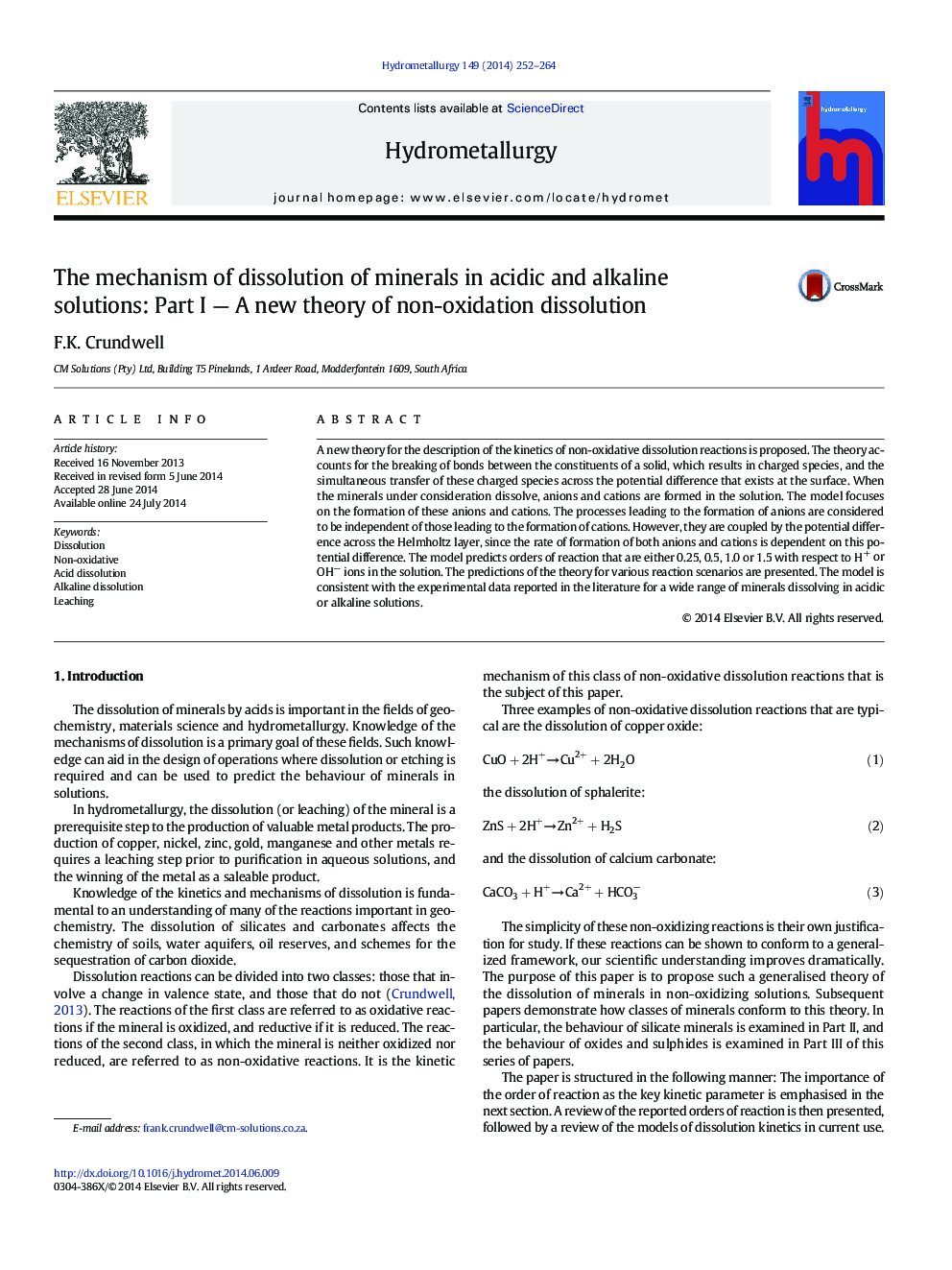| Article ID | Journal | Published Year | Pages | File Type |
|---|---|---|---|---|
| 212263 | Hydrometallurgy | 2014 | 13 Pages |
•A new theory of non-oxidative dissolution that is applicable to a wide range of solids (oxides, hydroxides, sulfides, silicates, carbonates and phosphates) is described.•The theory is more clearly defined than previous models.•The theory can describe the kinetics of the acid and alkaline dissolution of minerals.•The theory can describe kinetics of dissolution both close to and far from equilibrium.
A new theory for the description of the kinetics of non-oxidative dissolution reactions is proposed. The theory accounts for the breaking of bonds between the constituents of a solid, which results in charged species, and the simultaneous transfer of these charged species across the potential difference that exists at the surface. When the minerals under consideration dissolve, anions and cations are formed in the solution. The model focuses on the formation of these anions and cations. The processes leading to the formation of anions are considered to be independent of those leading to the formation of cations. However, they are coupled by the potential difference across the Helmholtz layer, since the rate of formation of both anions and cations is dependent on this potential difference. The model predicts orders of reaction that are either 0.25, 0.5, 1.0 or 1.5 with respect to H+ or OH− ions in the solution. The predictions of the theory for various reaction scenarios are presented. The model is consistent with the experimental data reported in the literature for a wide range of minerals dissolving in acidic or alkaline solutions.
